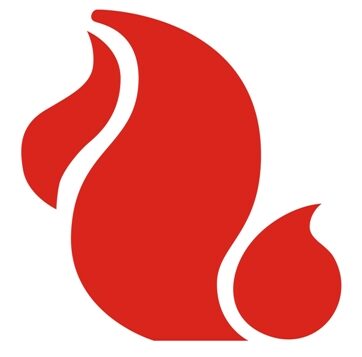Inside analysis, i focus on injections-caused “aseismic” slip and you will, specifically, how the enhancement off fault permeability affects the organization of slip. So you can unravel possible controls on aseismic sneak, we basic revisit brand new evolution from blame permeability of this aseismic deformations seen throughout the a call at situ experiment out of fluid injection to your a densely instrumented fault into the a good carbonate development (Guglielmi, Cappa, mais aussi al., 2015 ). 2nd, i make coupled hydromechanical simulations off liquid treatment in a single planar blame lower than worry and you may liquid tension criteria similar to those found in the inside the situ experiment. We focus on the effect of the change in the blame permeability for various first stress standards and you will rubbing rules so you can elucidate exactly how this might affect the development of aseismic slip.
where ?f is the viscosity of fluid (Pa.s) and w is the fault width (m). In a parametric analysis, we find values of hydraulic aperture that minimize the misfit between model predictions and observed pressure and flow rate histories at the injection point. The permeability is then defined from the best fit value of hydraulic aperture. Thus, this experiment offers ideal conditions to evaluate how fault permeability evolves with accumulated displacements, both during aseismic deformation and seismic activity, and to constrain further hydromechanical modeling analyses of fault slip (see section 4).
step three Hydromechanical Modeling regarding Blame Sneak from the Fluid Injections
Observations exhibited an intricate interplay anywhere between water tension, fault deformation, and you will fault permeability change. Guglielmi, Cappa, mais aussi al. ( 2015 ) revealed that the increase inside water tension induces blame starting and aseismic sneak within shot. The seismicity will be catholicmatch brought about indirectly far away regarding injections from the stress import of the propagating aseismic sneak. Duboeuf et al. ( 2017 ) confirmed that it procedure inside a series of 11 shot studies in the an equivalent site. On these studies, seismic occurrences had been discover between step 1 and twelve meters regarding the shot things the spot where the measured fault slip try aseismic. Upcoming, Guglielmi, Cappa, ainsi que al. ( 2015 ) receive a beneficial fourteen-flex increase of the fault permeability regarding 0.07 to a single.0 ? ten ?ten m 2 throughout aseismic sneak, symbolizing regarding the 70% of overall cumulative permeability boost (20-fold) within the injections period (Figure 1). Alternatively, throughout a consequent ages of seismic craft far away of injection, this new blame permeability just develops from 1.0 ? 10 ?ten to 1.thirty five ? ten ?10 yards 2 . Which, these detail by detail observations regarding blame permeability enhancement while in the blame activation emphasize your development of blame hydraulic details is important knowing the growth out of sneak throughout the liquid injection. Certainly, the increase in the fluid tension triggers blame beginning and you can slip that lead to permeability alter. After that, various modes out of fault permeability transform appear to influence the fresh slip choices.
step three.step 1 Model Options
The method has been used to check on the new hydromechanical decisions away from fractured stones and you may fault areas throughout liquid pressurization (Cappa mais aussi al., 2006 ; Guglielmi ainsi que al., 2008 ), showing that advancement of blame hydraulic diffusivity is a completely paired condition dependent on stress and you will liquid tension (Guglielmi, Elsworth, ainsi que al., 2015 ).
We select a simplified yet representative 2-D model (200 m ? 50 m) that considers fluid injection into a horizontal flat fault in a homogeneous elastic and impervious medium (Figure 2a). The remote normal (?n) and shear stress (?) resolved on the fault plane are constant. During injection, the fluid pressure in the fault is increased step by step in 0.5-MPa increments every 150 s. Injection occurs in a point source (Figure 2a) in order to reproduce a loading path consistent with the in situ data presented in Figure 1. The total time of injection is 1,050 s. We focus on the period of largest increase of fault permeability observed in the in situ experiment (Figure 1b). For numerical accuracy, the mesh size is refined along the fault (0.15 m) and gradually increases to 0.5 m in the direction normal to the fault toward model boundaries.
